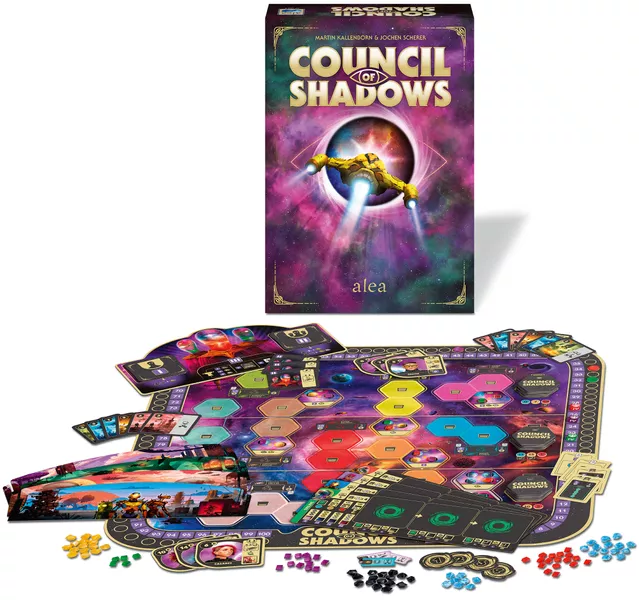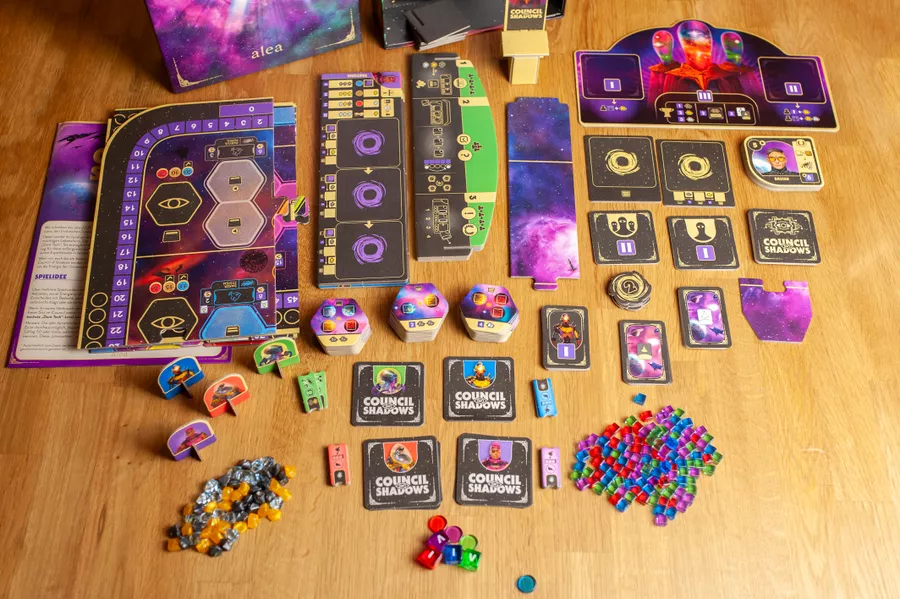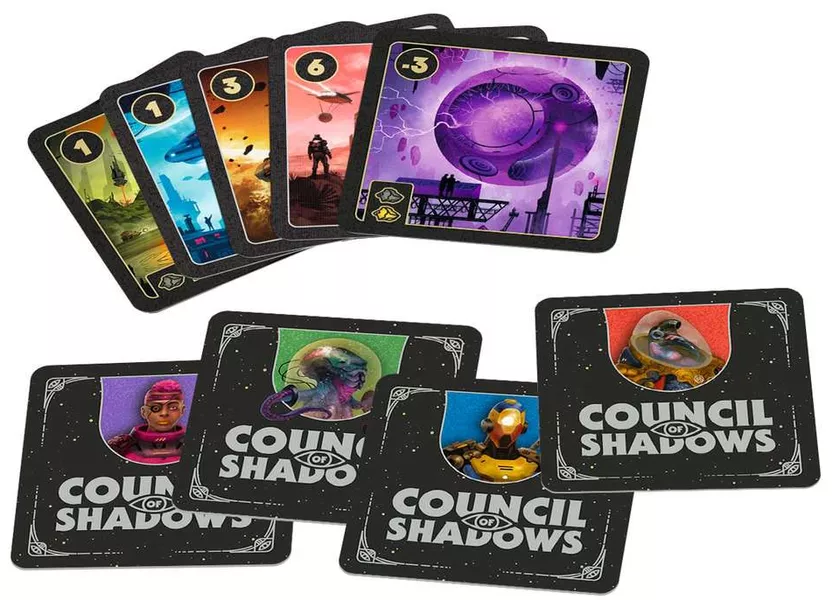Council of Shadows Review
In the realm of board games, where strategy meets storytelling, lies Council of Shadows, an intricate tapestry of deception, negotiation, and cunning maneuvers. Developed by seasoned designers and published by Shadowborn Games, this game transports players to a world shrouded in secrecy and political intrigue, where every decision holds weight and every alliance is a double-edged sword.

At its core, Council of Shadows is a game of deduction and manipulation set in a medieval fantasy world. Players take on the roles of powerful shadowy figures vying for control over the council, employing agents, manipulating resources, and engaging in clandestine dealings to outmaneuver their rivals. The game unfolds over a series of rounds, each punctuated by tense moments of decision-making and strategic calculation.
One of the most striking aspects of Council of Shadows is its thematic depth. From the beautifully illustrated game board to the intricately designed character cards, every component oozes with atmosphere and lore. Each player represents a unique faction, with its own motives, strengths, and weaknesses, adding layers of narrative richness to the gameplay. Whether you align yourself with the cunning Spymasters or the mysterious Occultists, every faction offers a distinct playstyle and strategic approach, ensuring that no two games feel alike.
It should also be noted that Council of Shadows contains a fairly significant number of game pieces, all of which look and feel to be of superior quality. Each card, die, and token was without a scratch or misprint. This makes the game feel very clean, despite the piece count.

The heart of Council of Shadows lies in its gameplay mechanics, which seamlessly blend strategy with social interaction. Central to the experience is the concept of influence, a currency that players must carefully manage and leverage to further their agendas. Balancing short-term gains with long-term objectives is crucial, as alliances can shift in an instant, and trust is a scarce commodity in the shadowy world of politics.
The game’s action revolves around the council chamber, where players vie for control by deploying their agents and engaging in covert actions. Each round presents players with a myriad of choices, from recruiting new agents to sabotaging their rivals’ plans. The strategic depth of Council of Shadows shines through in its decision tree, as players must anticipate their opponents’ moves while advancing their own agendas.
What sets Council of Shadows apart from other games in its genre is its emphasis on negotiation and diplomacy. In order to succeed, players must master the art of persuasion, forging alliances, and brokering deals to tip the scales of power in their favor. The game encourages players to form temporary alliances, only to betray them at the opportune moment—a delicate dance of trust and betrayal that keeps tensions high and alliances fluid.

Despite its thematic richness and strategic depth, Council of Shadows is not without its flaws. New players may find the learning curve steep, as the game’s rules and mechanics can be complex to grasp initially. Additionally, the reliance on player interaction means that the experience can vary significantly depending on the group dynamics and individual playstyles involved. While some players may relish the opportunity to engage in intense negotiations and mind games, others may find themselves frustrated by the unpredictable nature of alliances and betrayals.
Overall, Council of Shadows is a triumph of design and execution, offering a compelling blend of strategy, storytelling, and social interaction. Whether you’re a seasoned strategist or a newcomer to the world of board games, there’s something to enjoy in the shadowy corridors of power. With its thematic depth, nuanced gameplay mechanics, and emphasis on player interaction, Council of Shadows stands as a shining example of the potential of modern board game design. So gather your allies, sharpen your wits, and prepare to immerse yourself in a world where nothing is as it seems, and every move could be your last.
